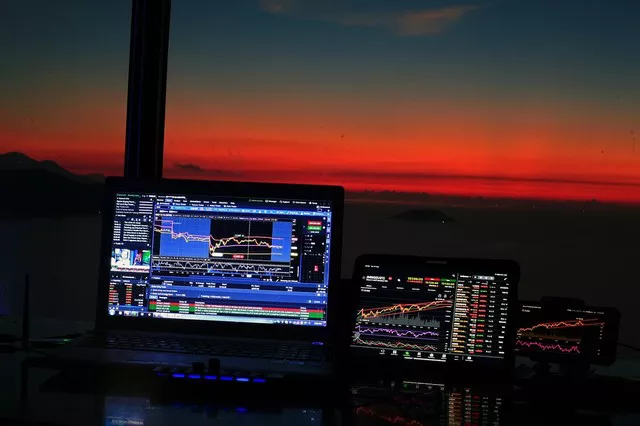In the vast and complex landscape of commodities trading, grain futures play a crucial role in global markets, serving as a benchmark for price discovery, risk management, and investment. From wheat and corn to soybeans and rice, grain futures allow traders to speculate on the future price movements of agricultural commodities, providing opportunities for profit and hedging against price volatility. But where exactly are grain futures traded, and what are the key exchanges and markets that facilitate these transactions? In this comprehensive guide, we will delve into the world of grain futures trading and explore the primary venues where these contracts are bought and sold.
Understanding Grain Futures
Grain futures are standardized contracts that obligate the buyer to purchase, and the seller to deliver, a specific quantity of a grain commodity at a predetermined price and future date. These contracts are traded on futures exchanges, where buyers and sellers come together to establish prices based on supply and demand fundamentals, market sentiment, and other factors. Grain futures provide transparency, liquidity, and price discovery for agricultural commodities, enabling producers, consumers, and investors to manage risk and make informed decisions.
Chicago Board of Trade (CBOT)
The Chicago Board of Trade (CBOT), established in 1848, is one of the oldest and most prominent futures exchanges in the world, known for its pioneering role in agricultural commodities trading. The CBOT is a subsidiary of the CME Group, the largest derivatives exchange operator globally, and offers a wide range of grain futures contracts, including:
Corn Futures (ZC): Corn futures contracts represent 5,000 bushels of corn and are traded in cents per bushel. Corn futures are widely used by producers, processors, and speculators to hedge against price risk and speculate on corn prices.
Wheat Futures (ZW): Wheat futures contracts represent 5,000 bushels of wheat and are traded in cents per bushel. Wheat futures provide exposure to the price movements of wheat varieties such as hard red winter wheat, soft red winter wheat, and spring wheat.
Soybean Futures (ZS): Soybean futures contracts represent 5,000 bushels of soybeans and are traded in cents per bushel. Soybean futures are popular among farmers, processors, and traders seeking to manage price risk and capitalize on trends in the soybean market.
The CBOT serves as a hub for grain futures trading, providing liquidity, price transparency, and efficient execution for market participants around the world.
Kansas City Board of Trade (KCBT)
The Kansas City Board of Trade (KCBT) is another prominent futures exchange specializing in agricultural commodities, particularly wheat. Founded in 1856, the KCBT offers wheat futures contracts that are physically delivered at designated delivery points in Kansas City, Missouri. The primary wheat futures contract traded on the KCBT is:
Hard Red Winter Wheat Futures (KE): Hard red winter wheat futures contracts represent 5,000 bushels of wheat and are traded in cents per bushel. Hard red winter wheat is a key ingredient in bread and flour production and is primarily grown in the central and southern plains of the United States.
The KCBT provides market participants with access to price discovery, risk management, and trading opportunities in the hard red winter wheat market.
Minneapolis Grain Exchange (MGEX)
The Minneapolis Grain Exchange (MGEX) is a futures exchange specializing in agricultural commodities, including wheat, corn, soybeans, and other grains. Founded in 1881, the MGEX offers wheat futures contracts that are physically delivered at designated delivery points in Minneapolis, Minnesota. The primary wheat futures contract traded on the MGEX is:
Spring Wheat Futures (MW): Spring wheat futures contracts represent 5,000 bushels of wheat and are traded in cents per bushel. Spring wheat is grown in regions with shorter growing seasons, such as the northern plains of the United States and Canada, and is valued for its high protein content.
The MGEX provides market participants with a platform for price discovery, risk management, and trading in the spring wheat market.
Intercontinental Exchange (ICE)
The Intercontinental Exchange (ICE) is a global futures exchange operator that offers a variety of agricultural futures contracts, including cotton, sugar, and coffee. While the ICE does not specialize exclusively in grain futures, it provides liquidity and trading opportunities for grain market participants. The ICE offers futures contracts for:
Soft Red Winter Wheat Futures (IPE): Soft red winter wheat futures contracts represent 5,000 bushels of wheat and are traded in cents per bushel. Soft red winter wheat is primarily used for livestock feed and is grown in regions such as the eastern United States and Europe.
The ICE complements other futures exchanges by providing additional options for trading agricultural commodities and managing price risk.
Conclusion
In conclusion, grain futures are traded on several prominent exchanges, including the Chicago Board of Trade (CBOT), Kansas City Board of Trade (KCBT), Minneapolis Grain Exchange (MGEX), and Intercontinental Exchange (ICE). These exchanges offer a variety of futures contracts for agricultural commodities such as corn, wheat, and soybeans, providing market participants with opportunities for price discovery, risk management, and trading. By understanding the key exchanges and markets where grain futures are traded, investors, producers, and traders can navigate the complexities of the grain futures markets and capitalize on opportunities in the ever-changing world of commodities trading.


